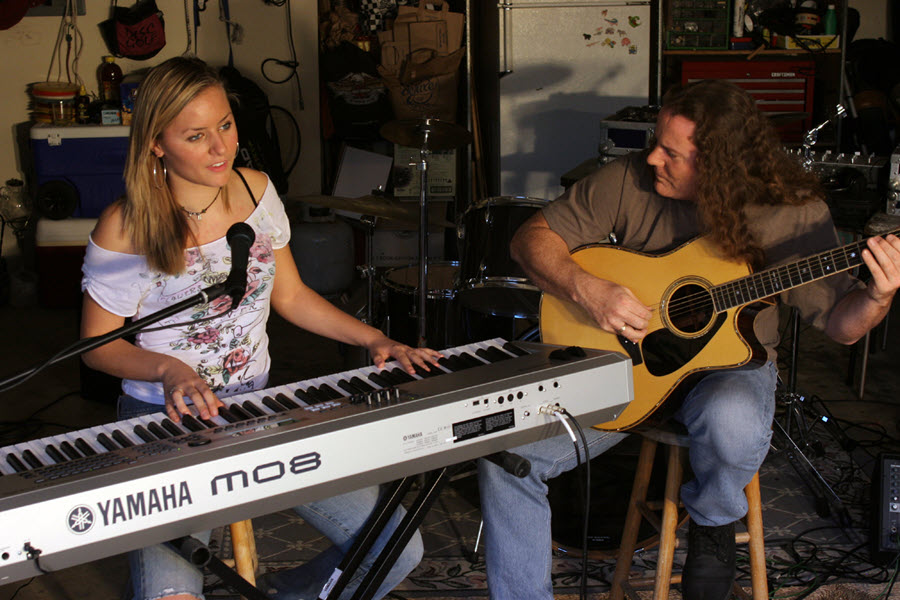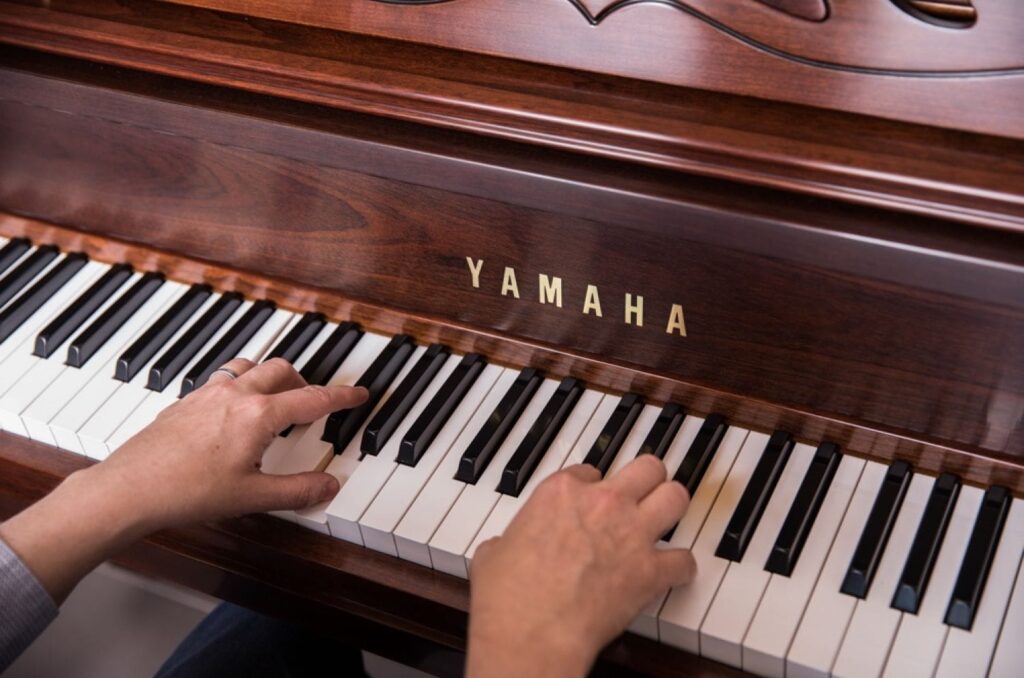Tagged Under:
What are MIDI Songs?
Add a whole new dimension to your digital keyboard.
Perhaps you’ve heard the term “MIDI songs” before, but maybe you’re not quite sure what they actually are — in fact, you may not even know what “MIDI” is. Fear not! Here are the answers to the most commonly asked questions about MIDI songs and explain why they’re such a great addition to your digital keyboard or digital piano.
What Is MIDI?
The word “MIDI” is an acronym for “Musical Instrument Digital Interface” — a standard developed back in the 1980s that allowed different digital music devices, such as keyboards, sequencers and drum machines (and, later, computers) to communicate with one another, regardless of manufacturer. In effect, MIDI is a kind of language, with clearly enumerated performance commands (such as “play middle C and hold it for four beats, then let go of it and play a D six beats later”) that all MIDI-compatible instruments understand.
Yamaha has prepared a short, easy-to-understand document called “MIDI Basics” that goes into greater detail. Click here to download it.
What are MIDI Songs?
Simply put, MIDI songs are just collections of data that tell your keyboard what to play. They come in the form of digital files (usually with the suffix .MID) that you can upload to your instrument, either directly from your computer via USB, or by transferring them first to a flash drive, then plugging the drive into the instrument’s USB port. As we’ll see shortly, MIDI song files are very small in size, so it takes mere seconds to load them; once in your instrument, you can play them instantaneously at the push of a button.
What are the Advantages of MIDI Songs Over Audio Files?
At this point you may be thinking, “Wait a minute … why should I bother with MIDI songs when I can simply download an audio file of the song I want to hear?” After all, there are literally millions of songs available on iTunes® and other streaming sources, as well as special “minus-one” audio files that leave one instrument out so you can play along.
But MIDI songs offer several major advantages over audio files, as follows:
1. You can freely change their key. This is not possible with audio files unless you’re willing to put up with the (often significant) degraded sound quality that results. Change the key of MIDI songs and the sound quality is completely unaffected — they sound exactly the same, only transposed.
2. You can freely change their tempo. Similarly, if you do this to audio files, the sound quality is degraded. Speed up an audio file more than a little bit, and everything starts sounding cartoonish (think Alvin and the Chipmunks); slow it down too much, and it sounds muddy and swampy. In contrast, MIDI songs can be slowed down or sped up by any amount without affecting the sound quality at all.
3. You can freely change their instrumentation. This isn’t possible with audio files, period.
4. You can turn tracks on and off, creating your own custom “minus-one” versions. This is only possible if an audio file is in a multi-track format, which is rare. If the audio file is stereo — which is almost always the case — it’s impossible to do. Being able to freely mute or solo instrument tracks makes it easy to hear and learn each individual component, and is a terrific live performance feature, too, since it allows you to do “break-downs” with the push of a button.
5. They’re much, much smaller than audio files. A one-minute MIDI file is about 10 KB (kilobytes, or thousands of bytes) in size. In contrast, an MP3 file of the same duration will be about 1 MB in size (a megabyte is a million bytes), while a better quality uncompressed audio file (such as a WAV) will be over 10 MB. The smaller the file, the less memory space is required and the faster the loading time — plus, you can typically load many MIDI files into even those instruments that have limited memory capacity.
6. They work with pretty much every modern digital keyboard. This includes all current Yamaha digital keyboards, digital pianos, arranger workstations and synthesizers, as well as keyboards introduced by most other manufacturers since the early 1990s — vintage instruments as well as newer ones.
What are the Different Types of MIDI Songs?
The innovation that enabled the creation of standardized MIDI songs was something called “General MIDI” (GM for short), a protocol that was universally adopted by all major digital keyboard manufacturers in 1991.
GM specifies that particular sounds be stored in particular memory areas — for example, Voice 1 must always be the sound of an acoustic grand piano; Voice 25, the sound of a nylon-string guitar. What’s more, these voices are arranged into 16 specified “families” of eight instruments each; the Reed family, as an example, must include four kinds of saxophones, an oboe, an English horn, a bassoon and a clarinet. Thanks to this meticulous degree of organization, no matter what GM-enabled digital keyboard you use, you always hear the same type of sound when you select a particular Voice (though the audio quality may differ somewhat from instrument to instrument). In addition, GM also specifies which drum sounds are assigned to which keys, so that the drum track of a MIDI song always plays the correct drums and cymbals, regardless of the digital keyboard being used.
In 1999, GM Level 2, which includes more sounds and features (such as the addition of standardized reverb and chorus effects), was adopted. Yamaha expanded upon this further with the introduction of the XG (EXtended General MIDI) standard. Most Yamaha downloadable MIDI songs incorporate multiple file formats (in many cases including both GM and XG versions) zipped into one file. Other “premium” versions, optimized for various Yamaha keyboards, are often included as well. (See below.) To learn which versions are recommended for your model, click here.
What are Premium MIDI Songs?
Premium MIDI songs (such as “XA,” “XT” or “G” files) offer additional features optimized to work with the score display functionality of specific Yamaha digital keyboards, as well as learning features such as stream lights and song waiting. They provide chord notation and lyrics, making it easy for you to play along on other instruments such as guitar and/or to sing along karaoke-style; if your instrument has vocal harmony features, you can even plug in a microphone and turn your voice into a choir! You can also make custom mixes of Premium MIDI songs on compatible Yamaha keyboards. An explanation of the different kinds of MIDI songs offered by Yamaha can be found here.
Yamaha offers hundreds of MIDI songs available for immediate downloading. Click here to view the available titles.














